-
 Bitcoin
Bitcoin $118400
0.47% -
 Ethereum
Ethereum $3836
2.20% -
 XRP
XRP $3.157
2.98% -
 Tether USDt
Tether USDt $0.9999
-0.03% -
 BNB
BNB $801.5
1.31% -
 Solana
Solana $180.9
2.07% -
 USDC
USDC $0.9999
-0.02% -
 Dogecoin
Dogecoin $0.2225
2.50% -
 TRON
TRON $0.3285
-1.02% -
 Cardano
Cardano $0.7789
2.60% -
 Hyperliquid
Hyperliquid $43.60
2.39% -
 Sui
Sui $3.892
4.41% -
 Stellar
Stellar $0.4229
3.34% -
 Chainlink
Chainlink $18.01
3.98% -
 Hedera
Hedera $0.2745
6.77% -
 Bitcoin Cash
Bitcoin Cash $582.3
3.38% -
 Avalanche
Avalanche $23.77
1.04% -
 Ethena USDe
Ethena USDe $1.001
0.01% -
 Toncoin
Toncoin $3.493
3.59% -
 Litecoin
Litecoin $110.0
2.48% -
 UNUS SED LEO
UNUS SED LEO $8.936
-0.37% -
 Shiba Inu
Shiba Inu $0.00001304
2.49% -
 Uniswap
Uniswap $9.999
1.09% -
 Polkadot
Polkadot $3.897
3.26% -
 Monero
Monero $308.6
-0.83% -
 Dai
Dai $0.9999
-0.01% -
 Bitget Token
Bitget Token $4.504
-0.04% -
 Pepe
Pepe $0.00001154
2.95% -
 Cronos
Cronos $0.1471
3.06% -
 Ethena
Ethena $0.6691
19.53%
Is it a bullish signal when RSI forms a W bottom pattern near 50?
A W bottom on RSI near 50 signals weakening bearish momentum and potential bullish reversal, especially when confirmed by volume, price action, and broader market trends.
Jul 30, 2025 at 05:08 am

Understanding the RSI and Its Role in Technical Analysis
The Relative Strength Index (RSI) is a momentum oscillator that measures the speed and change of price movements on a scale from 0 to 100. It is widely used by traders to identify overbought or oversold conditions in financial markets, including cryptocurrencies. Typically, an RSI reading above 70 suggests overbought conditions, while a reading below 30 indicates oversold levels. However, RSI can also be used to detect potential trend reversals through pattern recognition. One such pattern is the W bottom, which is considered a bullish reversal formation when it appears under specific conditions. When this pattern forms near the 50 level, it raises questions about its significance compared to formations near the traditional 30 threshold.
What Constitutes a W Bottom Pattern on the RSI?
A W bottom on the RSI chart resembles the letter "W" and consists of two distinct lows with a higher high between them. The first bottom occurs when the RSI drops to a certain level and then rebounds. After a retracement, the indicator dips again but does not fall below the first low, forming the second bottom. The middle peak between the two lows completes the "W" shape. For the pattern to be valid, both lows should be near the same support level, and the second low must hold above the first or at least not break it significantly. In the context of RSI near 50, the formation suggests that downward momentum is weakening, even if the asset hasn’t reached oversold territory. This could imply a shift in sentiment from bearish to neutral or cautiously bullish.
Interpreting RSI W Bottom Near the 50 Level
When a W bottom forms near 50 on the RSI, it signals that selling pressure has diminished after two attempts to push the price lower. Unlike W bottoms that form near 30 (which indicate recovery from oversold conditions), those near 50 suggest a consolidation phase where bears are losing control but the asset hasn’t yet entered strong bullish territory. This scenario is common in ranging or mildly bearish markets where momentum shifts gradually. In cryptocurrency trading, where volatility is high, such a pattern may precede the start of a new uptrend, especially if confirmed by price action. The key factor is whether the RSI breaks above the midpoint resistance formed by the peak of the "W". A confirmed breakout above this resistance increases the likelihood of bullish continuation.
How to Confirm the Bullish Signal: Step-by-Step Validation
To determine whether a W bottom near 50 is a reliable bullish signal, traders should follow a series of validation steps:
- Observe the symmetry of the two lows — both should be at approximately the same RSI level, with the second low showing a slight higher bounce, indicating strengthening momentum.
- Check the volume on price chart during the formation — rising volume on the recovery after the second bottom supports the validity of the reversal.
- Look for a close above the neckline — the neckline is drawn across the peak between the two lows on the RSI; a close above this level confirms the pattern.
- Align with price structure — the underlying cryptocurrency price should also show signs of reversal, such as higher lows or bullish candlestick patterns like hammer or engulfing bars.
- Use additional indicators for confluence — pairing RSI with tools like moving averages or MACD can strengthen the signal. For example, a MACD crossover above the signal line during the second bottom adds confirmation.
Applying the W Bottom Strategy in Crypto Trading
In cryptocurrency markets, where momentum can shift rapidly, the RSI W bottom near 50 can be a valuable early warning of a potential bullish move. Traders can use this pattern to time entries with calculated risk. For example, a long position might be initiated when the RSI breaks above the neckline, with a stop-loss placed just below the second bottom of the "W". Take-profit levels can be set based on recent swing highs or Fibonacci extensions. It is crucial to monitor Bitcoin or Ethereum’s broader market trend, as altcoins often follow their lead. If BTC is also showing similar RSI patterns, the signal gains strength. Automated trading bots can be programmed to detect such formations using scripts that scan for double-bottom RSI configurations near the 50 mark across multiple timeframes.
Common Misinterpretations and Risk Factors
Not every W-shaped formation on the RSI leads to a successful reversal. A false signal may occur if the price fails to follow through after the RSI breaks the neckline. This can happen during periods of low volume or when external factors like regulatory news impact the market. Another risk is mistaking a neutral consolidation for a bullish reversal. If the RSI remains range-bound between 40 and 60 after the W bottom, it may indicate indecision rather than a clear trend change. Traders should avoid acting on the pattern in isolation. Instead, they must ensure that multiple timeframes align — for instance, a daily chart W bottom supported by a similar structure on the 4-hour chart increases reliability. Also, assets with low liquidity are more prone to false signals due to erratic price swings.
Frequently Asked Questions
Can a W bottom on RSI near 50 occur in a downtrend and still be valid?
Yes, it can. Even within a broader downtrend, short-term bullish reversals may form. The key is whether the pattern leads to a sustained move upward. Confirmation via price closing above the recent swing high is essential to validate the signal in a downtrend.
How long should the interval be between the two lows in a W bottom?
There is no fixed duration. The interval can range from several hours on lower timeframes (like 1-hour charts) to weeks on daily charts. What matters is that the two lows are clearly separated by a rebound, and the second low does not break the first by a large margin.
Should I use RSI period settings other than 14 for detecting W bottoms?
The default 14-period RSI is most commonly used, but adjusting it to 9 can make the indicator more sensitive, revealing patterns earlier. However, this may increase false signals. Testing different periods on historical data for a specific cryptocurrency can help determine optimal settings.
Does the W bottom work the same way on different cryptocurrencies?
While the pattern is applicable across assets, its reliability varies. Major cryptocurrencies like Bitcoin and Ethereum tend to produce more trustworthy signals due to higher liquidity and clearer trends. Smaller altcoins with erratic price action may generate misleading formations.
Disclaimer:info@kdj.com
The information provided is not trading advice. kdj.com does not assume any responsibility for any investments made based on the information provided in this article. Cryptocurrencies are highly volatile and it is highly recommended that you invest with caution after thorough research!
If you believe that the content used on this website infringes your copyright, please contact us immediately (info@kdj.com) and we will delete it promptly.
- Ozak AI: Can This Underdog Crypto Achieve a Bull Run to $1?
- 2025-07-31 22:30:12
- Coinbase Breach: Navigating Insider Risk and Bolstering Security
- 2025-07-31 23:11:55
- Bitcoin Rebounds, WeWake Presale Gains Traction: What's the Buzz?
- 2025-07-31 22:30:12
- Bitcoin, Altcoins, and Volume Watchlists: Decoding the Crypto Landscape
- 2025-07-31 23:11:55
- Tron, Fartcoin, and BlockchainFX: What's Trending (and What's Not) in the Crypto World
- 2025-07-31 21:32:19
- Bitcoin, Corporate Investments, and Sustainability: A New Era or Fleeting Fad?
- 2025-07-31 20:50:14
Related knowledge

How can you use the MACD histogram to determine trend strength?
Jul 31,2025 at 11:10pm
Understanding the MACD Histogram and Its ComponentsThe MACD (Moving Average Convergence Divergence) histogram is a visual representation of the differ...
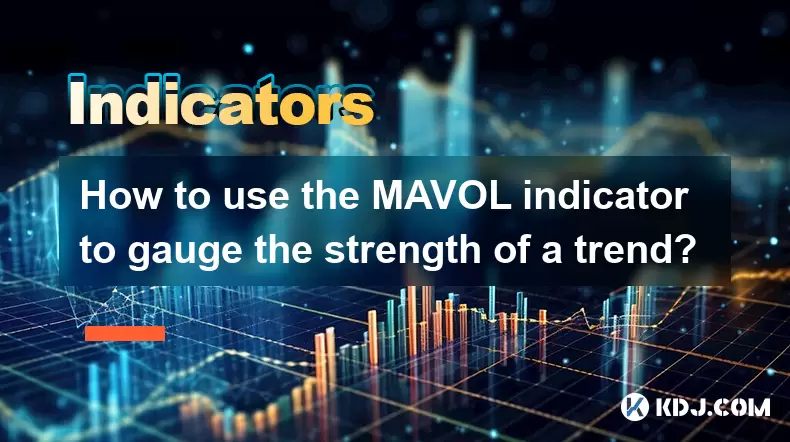
How to use the MAVOL indicator to gauge the strength of a trend?
Jul 31,2025 at 09:57pm
Understanding the MAVOL Indicator in Cryptocurrency TradingThe MAVOL indicator, short for Moving Average of Volume, is a technical analysis tool widel...
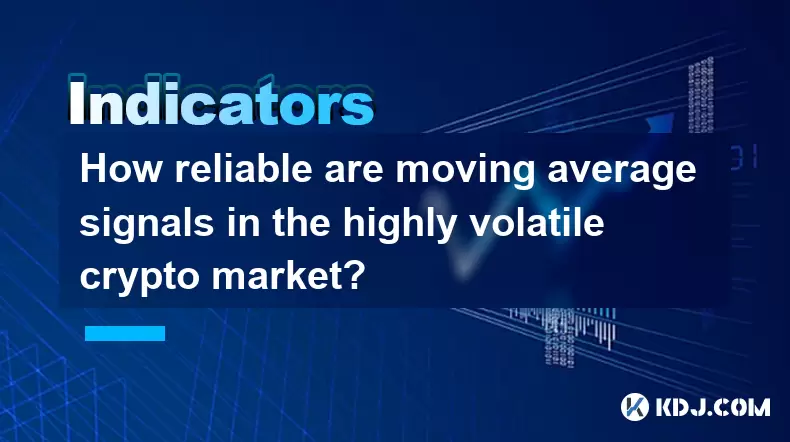
How reliable are moving average signals in the highly volatile crypto market?
Jul 31,2025 at 08:36pm
Understanding Moving Averages in Cryptocurrency TradingMoving averages (MAs) are among the most widely used technical indicators in the cryptocurrency...
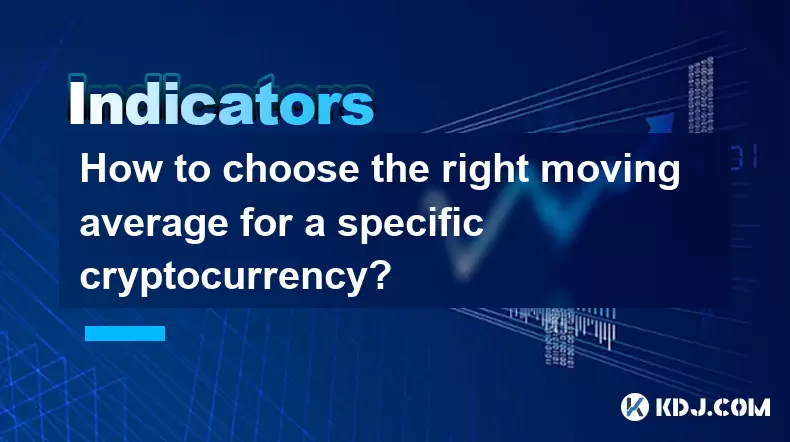
How to choose the right moving average for a specific cryptocurrency?
Jul 31,2025 at 10:29pm
Understanding the Role of Moving Averages in Cryptocurrency TradingMoving averages are foundational tools in technical analysis, widely used by crypto...
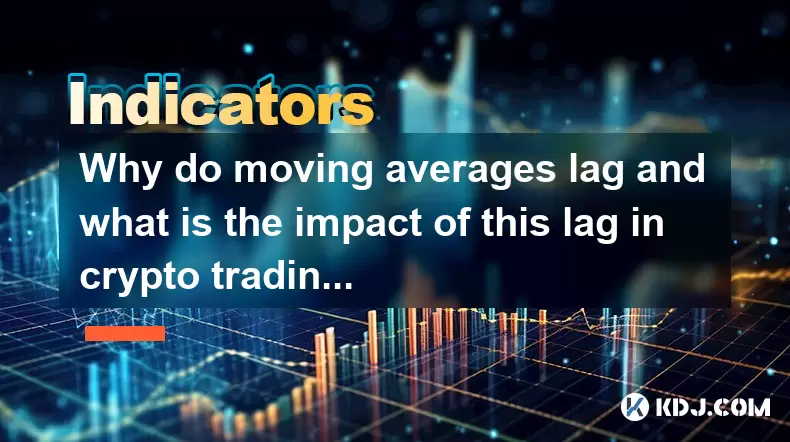
Why do moving averages lag and what is the impact of this lag in crypto trading?
Jul 31,2025 at 08:07pm
Understanding the Concept of Moving Averages in Crypto TradingMoving averages are among the most widely used technical indicators in cryptocurrency tr...
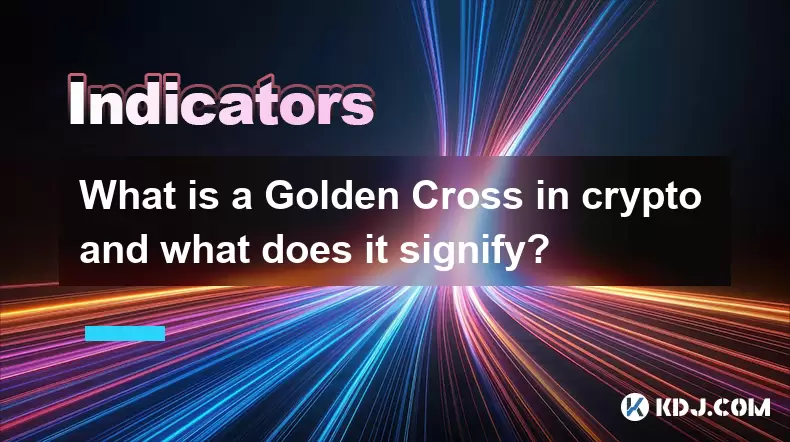
What is a Golden Cross in crypto and what does it signify?
Jul 31,2025 at 10:36pm
Understanding the Golden Cross in Cryptocurrency MarketsThe Golden Cross is a technical analysis pattern widely observed in cryptocurrency trading. It...

How can you use the MACD histogram to determine trend strength?
Jul 31,2025 at 11:10pm
Understanding the MACD Histogram and Its ComponentsThe MACD (Moving Average Convergence Divergence) histogram is a visual representation of the differ...

How to use the MAVOL indicator to gauge the strength of a trend?
Jul 31,2025 at 09:57pm
Understanding the MAVOL Indicator in Cryptocurrency TradingThe MAVOL indicator, short for Moving Average of Volume, is a technical analysis tool widel...

How reliable are moving average signals in the highly volatile crypto market?
Jul 31,2025 at 08:36pm
Understanding Moving Averages in Cryptocurrency TradingMoving averages (MAs) are among the most widely used technical indicators in the cryptocurrency...

How to choose the right moving average for a specific cryptocurrency?
Jul 31,2025 at 10:29pm
Understanding the Role of Moving Averages in Cryptocurrency TradingMoving averages are foundational tools in technical analysis, widely used by crypto...

Why do moving averages lag and what is the impact of this lag in crypto trading?
Jul 31,2025 at 08:07pm
Understanding the Concept of Moving Averages in Crypto TradingMoving averages are among the most widely used technical indicators in cryptocurrency tr...

What is a Golden Cross in crypto and what does it signify?
Jul 31,2025 at 10:36pm
Understanding the Golden Cross in Cryptocurrency MarketsThe Golden Cross is a technical analysis pattern widely observed in cryptocurrency trading. It...
See all articles

























































































